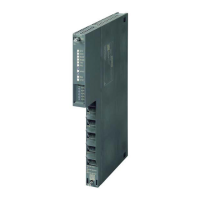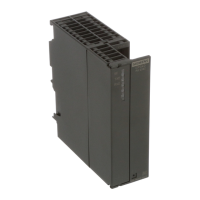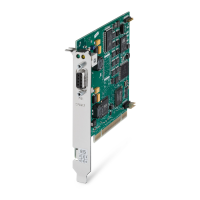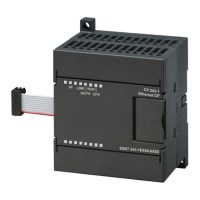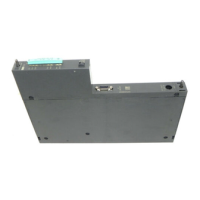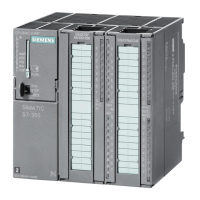5 Performance Data
B4A−34
CP 443-1 Advanced for Industrial Ethernet / Manual Part B4A
Release 01/2007
C79000-G8976-C193-06
2. The input data is mirrored there and transferred over interconnections back to
station 1 where it is evaluated and forwarded etc. The time required for the
individual transfer and evaluation cycle is measured in station 1. This corresponds
to approximately twice the reaction time according to the definition above.
The CPU cycle time (cycle time of OB1) for this measurement is 6 ms.
Note: With shorter cycle times, the reaction times are further reduced and with
longer cycle times they are correspondingly extended.
Measurement results
From the following diagram, you can see the average values for the reaction time
of the cyclic interconnections depending on the size of the interface DB.
0
10
20
30
40
50
60
70
0 480 960 1440 1920 2400 2880
Evaluation
From the diagram, you can see that the transfer frequencies configured at 10 ms
or 20 ms in the sample configured are not achieved. On the other hand, at a
configured transfer frequency of 50 ms, a corresponding reaction time of 50 ms
with 2400 bytes is kept to.
Average
reaction
time in ms
Size of the interface DB in bytes
1
2
3
Legend
The transfer frequency set in the parameters in SIMATIC
iMap is as follows for the recorded lines:
50 ms 20 ms 10 ms
1
2
3

